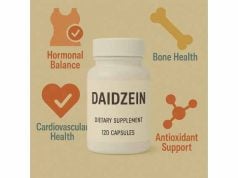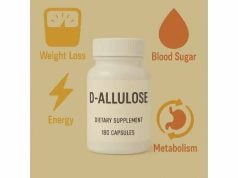
Dolomite is a naturally occurring mineral—calcium magnesium carbonate—that’s sometimes marketed as a two-in-one source of calcium and magnesium or used to re-mineralize purified water. Because calcium underpins bone strength and nerve signaling, and magnesium supports muscle function and energy metabolism, dolomite can look like a convenient way to cover two essentials at once. But there are important nuances: the actual elemental amounts vary by product; carbonate forms absorb best with food; and historical concerns about heavy-metal contamination mean quality control matters. Below, you’ll find what dolomite is (and is not), how it compares to other options, realistic benefits, how to translate “milligrams of dolomite” into elemental calcium and magnesium, who should avoid it, and practical, evidence-aligned dosing guidance for everyday use.
Quick Dolomite Highlights
- Typical composition delivers ~21% calcium and ~12% magnesium by weight; absorption improves with meals.
- Potential benefits map to calcium and magnesium roles: bone health, muscle and nerve function; not unique to dolomite.
- Start around 200–400 mg elemental calcium daily from supplements if diet is short; keep supplemental magnesium ≤350 mg/day.
- Safety caveat: choose third-party tested products due to historic heavy-metal contamination in some “natural” calcium sources.
- Avoid if you have significant kidney disease, a history of calcium kidney stones without medical guidance, or take interacting drugs.
Table of Contents
- What is dolomite and how does it work?
- What benefits can you expect from dolomite?
- How to use dolomite in practice
- How much dolomite per day?
- Safety, risks, and interactions to know
- Dolomite versus alternatives: when it makes sense
What is dolomite and how does it work?
Dolomite is the mineral calcium magnesium carbonate, with the chemical formula CaMg(CO₃)₂. In practical terms, that means it contains both calcium and magnesium, but not in equal amounts: a typical dolomite sample is about 21% calcium and 12% magnesium by weight. When dolomite contacts acid in your stomach—or carbon dioxide–enriched water—it releases calcium and magnesium ions (plus bicarbonate), the same ions you would obtain from familiar salts like calcium carbonate and magnesium carbonate. This “ion story” is useful because your body absorbs ions, not brands; the form mostly affects how quickly and how well those ions become available.
In industry, high-purity dolomite is used to re-mineralize purified bottled water—raising calcium and magnesium modestly to improve taste. In that context, manufacturers must meet tight heavy-metal specifications, and resulting mineral levels are low compared with daily requirements. As a dietary supplement, however, dolomite has a checkered history. Earlier decades saw “natural” calcium sources—bone meal, oyster shell, and some dolomite supplements—test positive for lead or other metals. Modern, well-controlled products can be made to strict limits, but not every supplement on store shelves is equally vetted. That’s why the smartest move with any dolomite product is to verify third-party testing (for example, USP or NSF) or choose brands that disclose metal limits and lot testing.
Mechanistically, dolomite behaves like a carbonate salt. Carbonates buffer stomach acid and are best absorbed with meals when gastric acid is present. Calcium absorption saturates: you’ll generally take in a higher fraction from a 300–500 mg elemental dose than from a single large 1,000 mg dose. Magnesium absorption also varies by salt and dose, with higher doses prone to causing loose stools when unabsorbed salts stay in the gut.
A practical translation helps: because only part of the pill is calcium or magnesium, “1,000 mg dolomite” provides about 210 mg calcium and 120 mg magnesium. Labels sometimes list the weight of the raw material rather than elemental minerals; where “elemental” values aren’t listed, you can estimate using the 21%/12% rule, but verified elemental amounts are always preferable.
Finally, it’s important to separate expectations. Dolomite is not a unique performance enhancer; it’s a mineral source. Any benefits are those of adequate calcium and magnesium status—strong bones over decades, normal muscle and nerve function, and, for some, relief of acid indigestion—rather than a special effect tied to the rock itself.
What benefits can you expect from dolomite?
Think of dolomite as a delivery vehicle for two fundamental minerals. The realistic benefits align with well-documented roles of calcium and magnesium in human physiology:
- Skeletal health over the long term. Adequate calcium intake supports bone mineralization, helping maintain bone density as you age. In adults, the daily recommended calcium intake is roughly 1,000–1,200 mg depending on age and sex. Supplements can help close dietary gaps, but they are not a standalone fix for osteoporosis and are most effective when part of a broader plan that includes vitamin D sufficiency, resistance exercise, and lifestyle measures.
- Muscle and nerve function. Calcium enables muscle contraction and nerve transmission; magnesium is essential for relaxation of muscle fibers and stabilizing nerve membranes. Low magnesium can present as muscle cramps, fatigue, or migraines in some contexts, and correction of deficiency (dietary or supplement-assisted) can normalize function.
- Acid neutralization and occasional indigestion. Because dolomite is a carbonate, it neutralizes stomach acid. Some people experience short-term relief of heartburn when they take carbonate-based minerals with or after meals. That said, using carbonate salts as routine antacids isn’t ideal for everyone: frequent symptoms deserve a medical work-up, and magnesium-containing antacids can cause diarrhea at higher doses.
- Hydration minerals in water. In beverages, small amounts of calcium and magnesium improve taste and can slightly contribute to daily intake. This is the context in which high-purity dolomite is specifically permitted as a source of calcium and magnesium ions in re-mineralized water. Note that these amounts are typically modest and not intended to “supplement” to the RDA.
What dolomite doesn’t do is equally important. It has no unique fat-loss, hormone-balancing, or detoxifying properties, and claims that “natural” mineral rocks are inherently safer or more effective than refined salts are not supported by comparative human trials. In fact, raw-material variability is higher with mined sources, which is why quality assurance is a non-negotiable.
If your goal is bone health, prioritize the pillars: total daily calcium in the recommended range (mostly from food), adequate vitamin D status, sufficient protein, and regular resistance and impact exercise. Use dolomite or another calcium source to fill a measured gap—not to overshoot the total, since large supplemental calcium doses may raise kidney stone risk in some individuals, especially when taken away from meals. For muscle cramp–related goals, modest magnesium repletion (from food first, then supplementation as needed) is reasonable; carbonate forms are acceptable, though some people tolerate other salts better.
Bottom line: dolomite can contribute to calcium and magnesium adequacy when chosen carefully and dosed thoughtfully. Its benefits are the benefits of the minerals themselves, and its risks are the known risks of excessive or poorly vetted mineral supplementation.
How to use dolomite in practice
1) Confirm you actually need it. Inventory your diet. Many people meet most of their calcium through food (dairy, fortified plant milks, tofu set with calcium, canned fish with bones, greens). Magnesium is abundant in legumes, nuts, seeds, whole grains, and leafy vegetables. If your average intake is near the recommended range, a supplement may be unnecessary.
2) Read the label for elemental amounts. With mineral supplements, what matters is the number of milligrams of elemental calcium and magnesium—not the weight of dolomite powder. If a product lists only the raw material (e.g., “dolomite 1,500 mg”), estimate ~315 mg calcium and ~180 mg magnesium (using 21% and 12%). Prefer products that clearly state elemental values and are third-party tested.
3) Time it with meals. Carbonate salts depend on stomach acid for dissolution and absorb best with food. Split calcium into two or three smaller doses (ideally ≤500–600 mg elemental per dose) instead of one large bolus; this improves fractional absorption and reduces constipation. Magnesium carbonate can loosen stools at higher doses; start low and move up as tolerated.
4) Fit dolomite into your total daily targets. For most adults:
- Calcium goal (from all sources): ~1,000 mg/day (men and women 19–50), 1,200 mg/day (women ≥51; men ≥71).
- Magnesium goal (from food plus supplements): ~320 mg/day (adult women) to ~420 mg/day (adult men).
- Important ceiling: magnesium’s tolerable upper intake level from supplements only is 350 mg/day for adults; food magnesium doesn’t count toward this limit.
5) Mind interactions. Calcium and magnesium chelate many medications in the gut, lowering drug absorption. Space dolomite at least:
- 2 hours before or 6 hours after dolutegravir (an HIV medication).
- 2 hours apart from levothyroxine.
- 2–6 hours away from tetracycline and fluoroquinolone antibiotics, and separate from oral bisphosphonates.
6) Choose quality. Because mineral rocks can carry trace metals, favor brands with published heavy-metal limits (for example, lead <1 mg/kg) and lot-specific third-party tests. Avoid unlabeled “natural calcium” blends if purity isn’t documented. If you’re pregnant or purchasing for a child, opt for rigorously tested calcium and magnesium products instead of generic dolomite.
7) Track how you feel. Common side effects include constipation from calcium carbonate and diarrhea from magnesium salts. Adjust timing, split dosing, or switch forms (e.g., calcium citrate; magnesium glycinate/citrate) if needed. Seek medical advice if you have kidney disease, a history of calcium kidney stones, unexplained GI symptoms, or you’re on multiple interacting medications.
Used this way—needs-based, meal-timed, and quality-vetted—dolomite can serve as a practical mineral add-on, but it’s rarely the only or even the best option.
How much dolomite per day?
Because dolomite is a mixture, its dosing starts with a conversion. Typical composition supplies about 21% calcium and 12% magnesium by weight. To estimate elemental intake:
- 1,000 mg dolomite ≈ 210 mg calcium + 120 mg magnesium
- 1,500 mg dolomite ≈ 315 mg calcium + 180 mg magnesium
- 2,000 mg dolomite ≈ 420 mg calcium + 240 mg magnesium
Now map that to daily targets and limits:
- Calcium: Most adults aim for 1,000–1,200 mg/day total (diet + supplements). Many diets already provide 600–900 mg. If your diet averages ~800 mg/day, a supplement providing 200–400 mg elemental calcium can close the gap without overshooting. With dolomite, that’s roughly 1,000–2,000 mg of dolomite daily, split with meals.
- Magnesium: Adult women generally need ~320 mg/day, adult men ~420 mg/day total (food plus supplements). Because many people consume ~200–300 mg from diet, a 100–200 mg supplemental magnesium “top-off” is common. With dolomite, 1,000–1,500 mg contributes ~120–180 mg magnesium—often sufficient. Do not exceed 350 mg/day of supplemental magnesium (UL) unless a clinician advises and monitors you.
Sample plans (illustrative, not prescriptions):
- Calcium-lean diet (~700 mg/day) with good magnesium intake:
Take 1,500 mg dolomite once daily with dinner (≈315 mg calcium, 180 mg magnesium). This brings calcium toward 1,000 mg and adds moderate magnesium. If stools loosen, split to 750 mg with lunch and 750 mg with dinner. - Plant-forward eater (~900 mg calcium; ~250 mg magnesium):
Take 1,000 mg dolomite with a meal (≈210 mg calcium, 120 mg magnesium). Consider an additional 100 mg magnesium from a non-carbonate form (e.g., glycinate) if cramping persists, staying at or below the 350 mg/day supplemental UL. - Perimenopausal woman (target calcium ~1,200 mg/day) who eats ~800 mg calcium from food:
Take 2,000 mg dolomite split with lunch and dinner (≈420 mg calcium total; 240 mg magnesium). Reassess constipation/diarrhea and adjust form or dose if needed.
Dosing guardrails and timing tips:
- Keep single elemental calcium doses ≤500–600 mg for better absorption.
- Take carbonate forms with meals.
- Hydration matters—especially if you’ve had calcium oxalate stones. Pair calcium with meals, don’t megadose between meals, and keep fluids up through the day.
- Re-check totals if you also take a multivitamin or antacid that contains calcium or magnesium—stacking is easy to do by accident.
These ranges cover typical, otherwise-healthy adults. If you have chronic kidney disease, a history of recurrent stones, malabsorption, or you’re pregnant or breastfeeding, get individualized guidance on mineral dosing and product selection.
Safety, risks, and interactions to know
Heavy metals and product purity. Past testing found that some “natural” calcium sources—bone meal, oyster shell, and certain dolomite supplements—contained measurable lead. While manufacturing standards and source controls have improved, risk is not zero across the marketplace. Favor dolomite (or any mineral supplement) that is third-party certified and explicitly states tight heavy-metal limits. High-purity dolomite used to re-mineralize water is specified to very low lead, cadmium, and arsenic thresholds; that’s not automatically true of every over-the-counter pill.
Kidney stones. The relationship between calcium, vitamin D, and stone risk is nuanced. Adequate dietary calcium is protective for most calcium oxalate stone formers because it binds dietary oxalate in the gut. In contrast, large supplemental calcium doses, especially away from meals, can raise urinary calcium and have been associated with higher stone rates in some trials. Practical takeaways: keep supplemental calcium modest, take it with food, drink enough fluids, and discuss dosing with your clinician if you’ve had stones.
Gastrointestinal effects. Calcium carbonate can cause constipation, bloating, or gas; magnesium salts can cause diarrhea or cramping at higher doses. Splitting doses, taking with meals, and adjusting forms typically resolves these issues. Persistent symptoms warrant evaluation.
Hypercalcemia and hypermagnesemia. In healthy kidneys, diet-appropriate doses rarely push blood levels into unsafe ranges. Risks rise with very high supplemental intakes, pre-existing kidney disease, or high-dose antacid/laxative use. Early signs include nausea, constipation (calcium), or flushing and lethargy (magnesium). Stop the supplement and seek medical care if you suspect toxicity.
Medication interactions (space your doses):
- Dolutegravir (HIV therapy): take dolutegravir 2 hours before or 6 hours after mineral supplements.
- Levothyroxine: separate by at least 2 hours.
- Tetracycline/fluoroquinolone antibiotics: separate by 2–6 hours.
- Bisphosphonates: take on an empty stomach well before any minerals the same day.
Ask your pharmacist about other binders or chelators on your regimen.
Who should avoid or use only with medical guidance:
- People with significant chronic kidney disease or on dialysis.
- Those with a history of recurrent calcium kidney stones, especially if hypercalciuria is documented.
- Pregnant or breastfeeding individuals unless the product’s purity is well verified; safer calcium and magnesium forms with rigorous testing are widely available.
- Anyone on multiple interacting medications or with conditions affecting calcium/vitamin D metabolism.
Lastly, beware exaggerated claims. Dolomite won’t “detox” heavy metals or treat complex conditions. Use it as a measured mineral source—not a cure-all—and revisit your need periodically as your diet and health status change.
Dolomite versus alternatives: when it makes sense
When dolomite can be reasonable
- You want a combined calcium-and-magnesium source in modest amounts, taken with meals.
- You can verify elemental amounts and third-party testing (including heavy-metal limits).
- You tolerate carbonate forms without bothersome constipation (calcium) or diarrhea (magnesium).
When another choice may be better
- You need flexibility to adjust calcium and magnesium separately. Dolomite fixes the ratio (~21% Ca and ~12% Mg by weight). Many people need more calcium and less supplemental magnesium (or vice versa). Separate products let you tailor each mineral and avoid exceeding magnesium’s 350 mg/day supplemental UL.
- You prefer gentler GI tolerance. Some find calcium citrate less constipating than carbonate—plus it absorbs well with or without meals and is often recommended for people with achlorhydria or on acid-suppressing medications. Many also tolerate magnesium glycinate, citrate, or malate more comfortably than magnesium carbonate.
- You require strict purity documentation (pregnancy, pediatrics, kidney disease, long-term use). Choosing USP-verified calcium citrate and a separate, well-tested magnesium supplement can provide clearer, product-specific assurances.
Cost and availability
Dolomite tablets are often inexpensive, but so are basic calcium carbonate and many magnesium salts. Quality control, not raw-material type, usually drives price differences. Paying a bit more for tested products is worth it when exposure is daily and long term.
Water re-mineralization is a different use case
High-purity dolomite is sometimes used inside bottling systems to re-mineralize purified water for taste. The resulting calcium and magnesium levels are low and not intended to function as a therapeutic supplement. Don’t assume that an over-the-counter dolomite tablet matches the purity standards required in a bottling facility.
Bottom line
Choose the form that helps you meet—but not exceed—your daily targets, that fits your GI tolerance and medication schedule, and that you can verify for quality. For many, that means calcium citrate plus a separate magnesium option. Dolomite can still be a fit when simplicity and with-meal dosing line up, provided purity is clear and the numbers make sense for your goals.
References
- Calcium – Health Professional Fact Sheet 2025 (Guidance/Fact Sheet). ([Office of Dietary Supplements][1])
- Magnesium – Health Professional Fact Sheet 2022 (Guidance/Fact Sheet). ([Office of Dietary Supplements][2])
- GRAS Notice 806 Agency Response Letter 2019. (Regulatory letter describing composition and heavy-metal specifications for dolomite used to re-mineralize water). ([U.S. Food and Drug Administration][3])
- Calcium and Vitamin D Supplementation and Their Association with Kidney Stone Disease: A Narrative Review 2021 (Review). ([PMC][4])
- Lead content of calcium supplements 2000 (JAMA). (Seminal testing of “natural” calcium sources including dolomite). ([PubMed][5])
Disclaimer
This guide is informational and does not replace personalized medical advice. Minerals can interact with medications and medical conditions; dosing and product choice should be individualized. If you are pregnant or breastfeeding, have kidney disease, a history of kidney stones, or take prescription medicines, consult your healthcare professional before using dolomite or any calcium/magnesium supplement. If you experience adverse effects, stop the product and seek medical care.










